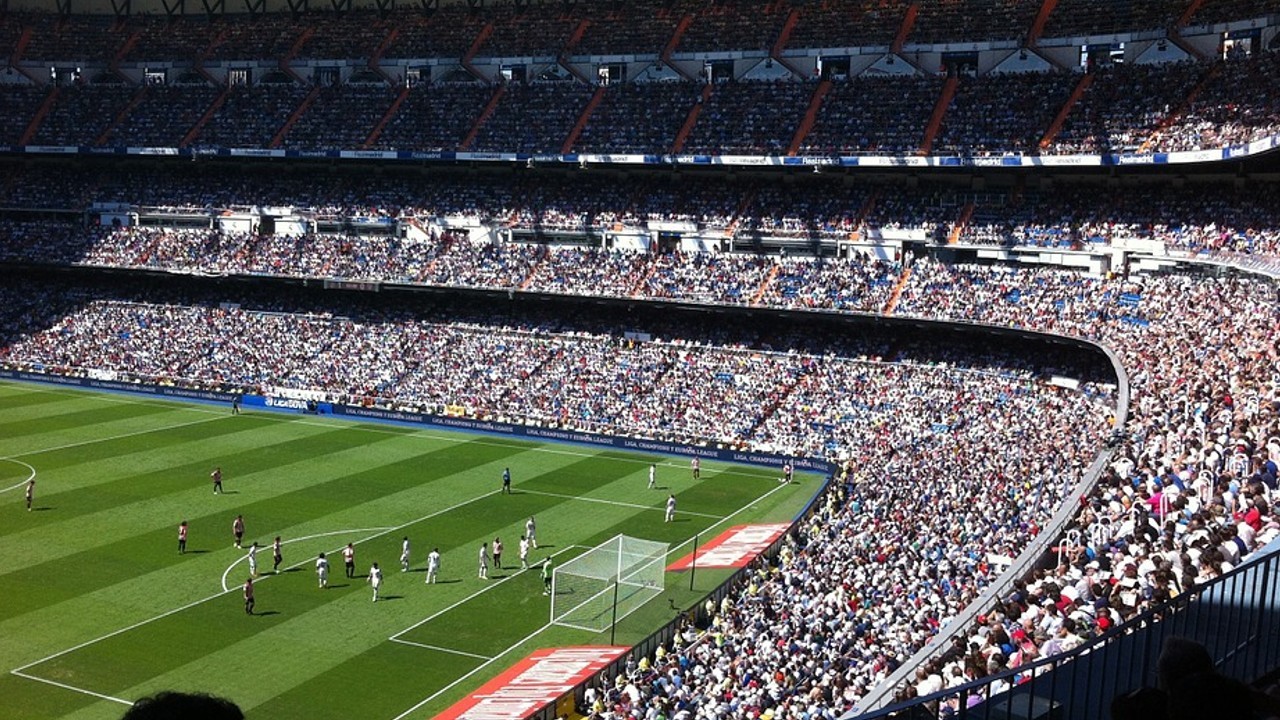5 European Soccer Stadiums to Visit in 2024

Following a summer where soccer fans immersed themselves in the international scene following Euro 2024 and the Summer Olympic Games, club action returns to the fore. The English Premier League 2024/25 season begins this weekend when title hopefuls Manchester United host Fulham at Old Trafford on Friday from 20:00 GMT. You can follow the Red Devils as they play the Cottagers live on television. Will the locals get off to a winning start? You can make your predictions at sportsbooks worldwide, including the top
soccer betting apps in the USA.
Old Trafford is just one of many world-famous venues in use this season, with other favorites, including the Etihad Stadium, Emirates Stadium, Anfield, Wembley, and Stamford Bridge, all certain to feature. You can visit the ground and watch the game in person, getting up close and personal with the best players and the most experienced coaches. Attending the game is always the best way to see professional soccer at the highest level.
Premier League games often attract a global audience, with fans traveling over land and sea to catch a glimpse of their favorite teams. UK fans have the leading stadiums and teams on their doorstep, but have you ever considered visiting the best overseas venues in soccer-mad cities like Madrid, Milan, and Munich? Fancy combining your vacation or work trip with a stadium visit? You could cheer on Ajax while in Amsterdam or absorb the famous Ibrox experience while in Glasgow.
With the top European leagues also preparing to embark on a fresh season, it could be time to plan your visit. Could 2024 be the year you finally tick off a stadium or two from your sports bucket list? Preparation is key to any memorable trip, and in this article, we list the
famous soccer stadiums worth a look. By the end of this page, you'll have some fresh ideas and can begin to plan your next trip.
 Camp Nou
Camp Nou
Camp Nou is the largest stadium in Europe and one of the most famous football venues in the world. Located in Barcelona, Spain, this iconic stadium has been the home of FC Barcelona since its opening in 1957. Known for its vast seating capacity, Camp Nou is renowned for the electric atmosphere created by the passionate Barça supporters. The stadium has hosted numerous historic matches, including Champions League finals and major international fixtures.
The design of Camp Nou is imposing, with a steep, towering structure that gives every spectator a clear view of the pitch. Beyond its size, the stadium is a symbol of Catalan pride and culture, making it a must-visit for football fans and tourists alike. FC Barcelona's motto, "Més que un club" (More than a club), is a reflection of the deep connection between the club, its stadium, and the region.
Santiago Bernabéu
The Santiago Bernabéu Stadium, located in the heart of Madrid, is another one of Europe's most legendary football arenas. Opened in 1947, it is the home of Real Madrid CF, one of the most successful and popular football clubs in the world. The Bernabéu is known for its grandeur and has been the venue for numerous major football events, including the Champions League finals and the 1982 FIFA World Cup final.
With a seating capacity of over 81,000, the stadium offers an intense atmosphere, particularly during El Clásico, the famous rivalry match between Real Madrid and Barcelona. The Bernabéu is currently undergoing a major renovation that will further enhance its facilities and capacity, solidifying its place as one of the top stadiums in Europe.
Signal Iduna Park
Signal Iduna Park, known until 2005 as Westfalenstadion, is the largest stadium in Germany and one of the most atmospheric in Europe. Located in Dortmund, it is the home ground of Borussia Dortmund, a club with a massive following both in Germany and around the world. The stadium is renowned for its incredible atmosphere, largely due to the "Yellow Wall" – the Südtribüne, which is the largest terrace for standing spectators in European football, holding up to 25,000 fans.
The energy generated by the Yellow Wall is legendary, making Signal Iduna Park an intimidating venue for visiting teams. Opened in 1974 and expanded several times since, the stadium has hosted many important matches, including games during the 2006 FIFA World Cup.
San Siro
San Siro, officially known as Stadio Giuseppe Meazza, is one of the most iconic football stadiums in the world. Located in Milan, Italy, it is unique in that it serves as the home ground for two of Italy's most successful clubs, AC Milan and Inter Milan. The stadium, which opened in 1926 and has been expanded and renovated several times, can hold nearly 76,000 spectators.
San Siro is known for its imposing structure, with its four massive corner towers and the steep stands that bring fans close to the action. The atmosphere during Milan derbies, known as the Derby della Madonnina, is particularly intense, with fans from both clubs creating an unforgettable experience. San Siro has also hosted four European Cup/Champions League finals, further cementing its place in football history.
Stade de France
The Stade de France, located in the Paris suburb of Saint-Denis, is the national stadium of France and one of the largest stadiums in Europe. It was built for the 1998 FIFA World Cup and was the site of France's historic victory in the tournament. With a seating capacity of nearly 81,000, the Stade de France is used for both football and rugby matches, as well as major concerts and events.
While it serves as the home ground for the French national football team, the stadium has also hosted numerous other high-profile events, including the UEFA Champions League finals and the 2016 UEFA European Championship final. Its design is notable for its elliptical roof, which provides cover for the spectators while leaving the playing field open to the elements.
There you have it: five must-see soccer stadiums that should feature on every fan's list. How many have you already visited, and which venue is the ideal location for the next visit?

